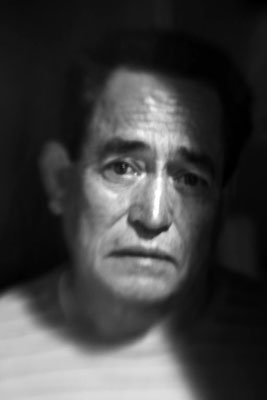All Nonfiction
- Bullying
- Books
- Academic
- Author Interviews
- Celebrity interviews
- College Articles
- College Essays
- Educator of the Year
- Heroes
- Interviews
- Memoir
- Personal Experience
- Sports
- Travel & Culture
All Opinions
- Bullying
- Current Events / Politics
- Discrimination
- Drugs / Alcohol / Smoking
- Entertainment / Celebrities
- Environment
- Love / Relationships
- Movies / Music / TV
- Pop Culture / Trends
- School / College
- Social Issues / Civics
- Spirituality / Religion
- Sports / Hobbies
All Hot Topics
- Bullying
- Community Service
- Environment
- Health
- Letters to the Editor
- Pride & Prejudice
- What Matters
- Back
Summer Guide
- Program Links
- Program Reviews
- Back
College Guide
- College Links
- College Reviews
- College Essays
- College Articles
- Back
Misophonia
Nobody likes a boisterous eater. Nobody wants to sit next to a student or co-worker who smacks their lips or pop their gum. It’s inevitable that everyone will have to confront this nuisance at some point or another. However, for an individual with misophonia, this burden is a daily occurrence. It becomes overbearing. Misophonia, or hatred of sound, is a mental disorder characterized by a severely negative reaction to everyday sounds. Something as simple as water dripping or someone tapping a pencil can send the quietest person into a violent fury. Eating sounds are often the most common trigger. “Everything I have turns into a boiling pot of rage, and then I have to talk myself down,” Adah Siganoff shared with TODAY.
Misophonia is often developed during adolescence and progressively grows worse. The majority of people with the disorder refuse to seek treatment out of embarrassment. Moreover, the disorder is only becoming recognized in recent years. Treatment options are limited, but include the use of antidepressants, like SNRIs, sound therapy, and talk therapy. Sound therapy enables the patient to engage in anxiety-provoking situations while wearing a hearing-aid type of device. The device plays white noise, such as rainfall, to distract the individual from the bothersome sounds. This allows the patient to gradually become acquainted with the sounds they had once blocked out. Nevertheless, it is easier said than done. These people have been isolating themselves as much as possible from the noises by completely avoiding them and possibly wearing earplugs. All of a sudden, they are greeted by what they tried so hard to block out. However, sound therapy has proven to be the most effective form of treatment.
On the other hand, Neurofeedback is another potential treatment option. Neurofeedback retrains the brain with positive reinforcement. By measuring brain waves, it teaches the brain to make healthier patterns by rewarding it when it does so. It has not shown any straightforward results with providing relief to those with misophonia. Whereas some people notice a complete remission of symptoms, others see no difference. It is unknown if Neurofeedback serves as a placebo or why it works for some and not all.
Recovery is strenuous. In addition, people with misophonia almost always suffer from anxiety disorders and/or depression which means that multiple illnesses are being treated at once. It’s oppressive, but anyone with misophonia wants to reclaim their life. They want to be around people again, rekindle relationships, and start afresh.

Similar Articles
JOIN THE DISCUSSION
This article has 0 comments.
